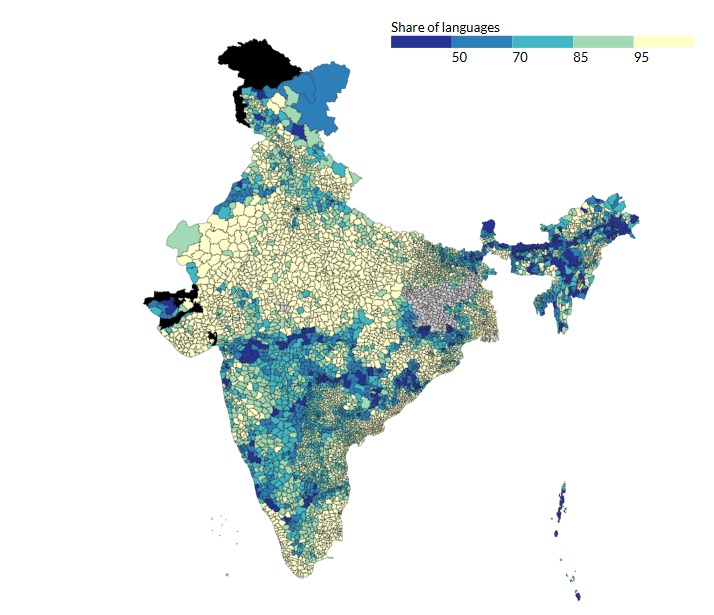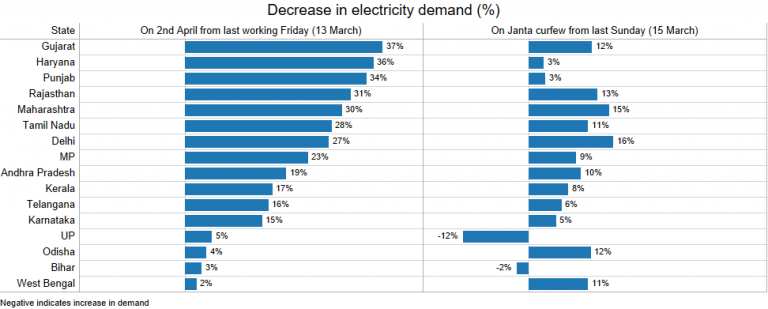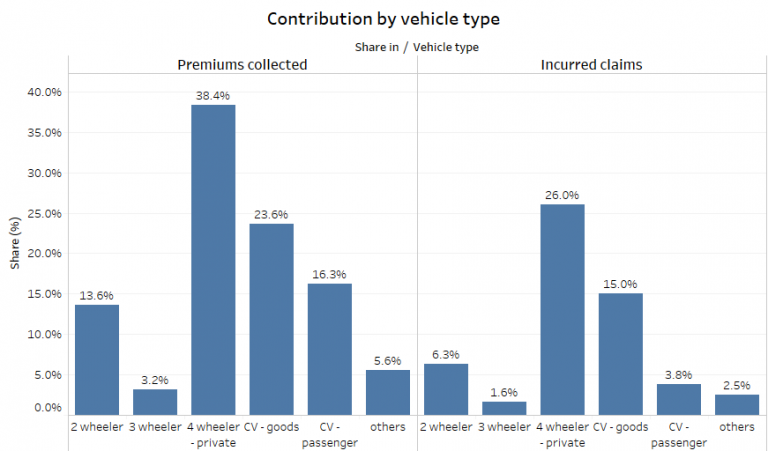Note: this is part of the second edition of our weekly newsletter, the Databyte. To receive it in your inbox, subscribe here.
Celebrating languages
Did you see that video where Ravish Kumar anchors a segment of his show on NDTV in Bhojpuri? If not, you should really see it first. This email will wait. You can watch it here.
It was in celebration of International Mother Language day on February 21, 2020. Ravish talks about the culture and history of his mother tongue, how a section of vulgar songs have harmed the language and how people should come forward to save it.
The lingering, satisfying smile on Ravish’s face was characteristic of any Indian when spoken to in her mother tongue outside the home state.
Last month, on a holiday to Udaipur, we were visiting the city palace. The guide asked us where we were from, and instantly, the rest of the entire tour was in Gujarati. For him, it would have been a well-rehearsed speech considering the number of tourists to Udaipur from Gujarat given its proximity, but he understood the power of one’s mother tongue. In his words, he said it helped him “create a connection with his customer instantly”.
Local language customization as a moat
The guide in Udaipur, or the shopkeeper or cab driver in Mumbai understand the power of local languages and have trained themselves to use it to their strengths. Unfortunately, many legacy companies have not.
This is a problem that manifests in several ways. Open a regional edition of a newspaper, and you’ll find multiple advertisements in Hindi or English, and not the local, regional language. Karthik Srinivasan, a communications consultant has long been pointing this out and has also written on it multiple times.
Showing your ad in a language that not many speak is one thing, but creating a product that handles all important product communications in a foreign language is quite the other. You realize that the moment you install a Paytm/Phone Pe or Google Pay app on your phone. The first screen that pops up is a language selector. All three offer a great variety of languages for the user to choose from, that then becomes the language in which all communication is handled. On the other hand, there are banks like HDFC, ICICI, Kotak Mahindra and more, who handle all their communication, including important banking SMS in English, a language that few would understand. Gaana, which has the highest Monthly Active Users (MAUs) in the music streaming industry in India, believes that understanding the local users and their preferences will help them fend off competition from Apple, Spotify and Amazon.
Use data to build that moat
While looking up the Census 2011 data, which breaks down India’s population on the basis of mother tongues, I realised why it must have been easy for the guide to learn and speak Gujarati fluently the way he did – one out of four people around him would be people whose mother tongue is Gujarati. Yes, 25% of people in Udaipur reported their mother tongue to be Gujarati. In fact, it figured in the top 5 most spoken languages in several sub districts of Western Madhya Pradesh and West Bengal as well.
Many sub-districts in the Hindi heartland have Hindi as the most spoken language, with more than 95% population reporting it as their mother tongue. But, Census classifies languages like Rajasthani and Haryanvi as Hindi. If you separate this, as it should ideally be, there is diversity in these areas as well.
Explore the top 5 most spoken languages using this visualisation tool. It maps India’s 5,564 sub-districts by their mother tongue and the percentage of people speaking it. Sub-districts colored white represent concentration of one spoken language, while sub-districts colored blue represent diversity of language.

Using this data from the Census, you can drill down up to the individual town and village level to identify its local languages. From communications, packaging, digital advertising to hiring strategies, company offerings must be tailored not only to the language people understand, but also speak.
“I don’t know the rules of grammar… If you’re trying to persuade people to do something, or buy something, it seems to me you should use their language, the language they use every day, the language in which they think. We try to write in the vernacular.” — David Ogilvy
[activecampaign form=51]


